Best form freeware (open source) builder tools
Best form freeware (open source) builder tools
Best form freeware (open source) builder tools
Looking to create powerful forms but for free? Explore top open-source builders like Metaforms +2 more. Easy to use, customizable & packed with features.
Looking to create powerful forms but for free? Explore top open-source builders like Metaforms +2 more. Easy to use, customizable & packed with features.
Looking to create powerful forms but for free? Explore top open-source builders like Metaforms +2 more. Easy to use, customizable & packed with features.



Forms are the backbone of online interactions, acting as gateways for collecting valuable data and streamlining communication. Whether you're a small business owner or a developer building the next big thing, you need a reliable way to create forms that are both functional and user-friendly.
This is where free and open-source or the form freeware builder tools come in. They offer a compelling alternative to expensive proprietary software, empowering you to take control of your form creation process.

Why Go Open-Source?
There are several advantages to choosing open-source form builders.
Customization Freedom: Unlike pre-built templates, open-source tools give you the flexibility to tailor forms to your exact needs. You can add or remove features, adjust layouts, and integrate them seamlessly with your existing workflows.
Cost-Effective: For budget-conscious businesses and individual developers, open-source form builders eliminate the ongoing subscription fees associated with proprietary software. This makes them a perfect solution for bootstrapped projects or personal use.
Data Security and Privacy: Open-source tools often provide greater transparency and control over your data. Since the source code is readily available, you can be confident about where your data is stored and how it's used. Additionally, you have the option to self-host the forms on your own server for maximum security.
Community-Driven Development: The open-source community thrives on collaboration and continuous improvement. You benefit from a network of developers who contribute to bug fixes, feature enhancements, and ongoing maintenance.
Key Features to Look For
Drag-and-Drop Interface: A user-friendly interface with drag-and-drop functionality allows you to build forms intuitively, even without any coding experience.
Form Element Variety: The best tools offer a wide range of form field types, including text boxes, dropdowns, checkboxes, radio buttons, and file uploads. This ensures you can capture the specific data you need from your users.
Validation and Logic: Built-in validation rules help ensure users enter accurate data. Conditional logic allows you to dynamically adjust the form based on user responses, creating a more interactive experience.
Integration Capabilities: The ability to integrate forms with databases and external data sources streamlines data collection and analysis.
Top Free Open-Source Form Builders
Budibase
This comprehensive tool goes beyond just forms, offering database management, automation, and authentication features. It boasts a user-friendly graphical interface for building forms and supports connecting to external databases for data storage.
Pros:
Jack-of-all-trades: Budibase goes beyond forms, offering database management, automation, and authentication features, making it a comprehensive solution.
Flexible Deployment: Choose between self-hosting for maximum control or a limited cloud-based option for convenience.
Solid Feature Set (Free Version): You can still build basic forms with conditional logic, file uploads, and data pre-filling, even in the free plan.
Cons:
Learning Curve: While not the most complex, Budibase might require some time to get comfortable with for non-technical users.
Free Version Limitations: You'll have a restricted number of forms and miss out on advanced features like payment integrations in the free plan.
Free Version Includes: Basic form building with conditional logic, file uploads, and data pre-filling. Limited number of forms and storage space.
Metaforms
Metaforms stands out for its focus on artificial intelligence (AI). Their AI-powered forms use smart logic to create a more engaging experience for users, potentially leading to higher completion rates and richer data collection. Additionally, Metaforms offers a clean and intuitive interface for building forms without sacrificing the power of customization.
Pros:
AI for the Win: Metaforms leverages artificial intelligence to create a more engaging user experience, potentially leading to higher completion rates.
Beginner-Friendly: The clean interface and drag-and-drop functionality make form building a breeze, even for those new to the game.
Scalable Powerhouse: Handles large volumes of submissions and users without breaking a sweat.
Cons:
Free Version Limits: The free plan restricts the number of forms and submissions you can collect, and data pre-filling is unavailable.
No Free Payment Integrations: If you need to collect payments through your forms, you'll need to integrate with a separate service.
Free Version Includes: Basic form building with conditional logic. Limited number of forms, submissions, and storage space. Data pre-filling not available.
Kinto Form Builder
This option caters to developers with React knowledge. Kinto provides exceptional flexibility in form design and functionality through code. While it requires some coding expertise, Kinto empowers developers to create highly customized forms that integrate seamlessly with React applications.
Pros:
Highly Scalable: Built to handle massive data volumes, making it ideal for large organizations.
Ultimate Customization: With its React-based framework, developers have the freedom to create highly customized forms and functionalities.
Free and Open-Source: No upfront costs – you have complete control over the code and modifications.
Cons:
Tech-Savvy Required: Coding knowledge in React is essential for full functionality, making it a no-go for non-technical users.
Limited Documentation: While resources exist, the documentation might not be as extensive as other options.
Self-Hosted Only: Requires you to manage your own server infrastructure, adding complexity and potential costs.
Free Version Includes: Full access to the code for customization (requires development expertise). You'll need to set up and maintain your own server.
Advanced Features Comparison

Technical Considerations Comparison

Ease of Use Comparison

Checklist for Choosing the Right Tool
The ideal open-source form builder depends on your specific needs and skill level. Consider the following factors when making your choice.
What type of tool do I need? (Form builder, project management, marketing automation, etc.)
What features are essential? (Conditional logic, user management, integrations, etc.)
What's my budget? (Free, freemium, paid plans)
What's my technical expertise? (Beginner, intermediate, advanced)
How many users will be using the tool?
Once you have a clearer picture, use this checklist to evaluate potential tools:
✓ Features:
Does it have all the features I need?
Are there any advanced features I might use later?
✓ Ease of Use:
Is the interface intuitive and user-friendly?
Is there sufficient documentation and tutorials?
✓ Integrations:
Does it integrate with the tools I already use?
Are there any important integrations missing?
✓ Security & Privacy:
Does it have strong security measures in place?
Does it comply with relevant data privacy regulations?
✓ Support:
Does the company offer adequate support options (e.g., email, chat, phone)?
Is the community active and helpful?
✓ Pricing:
Does the pricing model fit my budget?
Are there free trials or freemium plans available?
✓ Scalability:
Can the tool handle my current and future needs?
Does it offer options for scaling up as my project grows?
By carefully considering these factors and utilizing this checklist, you'll be well-equipped to choose the perfect tool for your needs!
Pro Tip: Explore online communities and user reviews to gain valuable insights from others who have used these tools.
Conclusion
Need to build forms without blowing your budget? Free and open-source form builders are your secret weapon! They're flexible, customizable, and have awesome communities to help you out. Plus, you can streamline your data collection and make those online interactions a breeze.
But wait, there's more! AI is all the rage these days, and guess what? It's changing the form building game.
Enter Metaforms. This free and open-source tool uses AI to create smarter forms that people actually enjoy filling out. That potentially means more responses and richer data for you.
Sound interesting? Give Metaforms a try! It's super easy to use and has advanced features to help you build powerful forms. You can always explore other options later, but Metaforms gives you a head start in this exciting, AI-powered future of form building.
Forms are the backbone of online interactions, acting as gateways for collecting valuable data and streamlining communication. Whether you're a small business owner or a developer building the next big thing, you need a reliable way to create forms that are both functional and user-friendly.
This is where free and open-source or the form freeware builder tools come in. They offer a compelling alternative to expensive proprietary software, empowering you to take control of your form creation process.

Why Go Open-Source?
There are several advantages to choosing open-source form builders.
Customization Freedom: Unlike pre-built templates, open-source tools give you the flexibility to tailor forms to your exact needs. You can add or remove features, adjust layouts, and integrate them seamlessly with your existing workflows.
Cost-Effective: For budget-conscious businesses and individual developers, open-source form builders eliminate the ongoing subscription fees associated with proprietary software. This makes them a perfect solution for bootstrapped projects or personal use.
Data Security and Privacy: Open-source tools often provide greater transparency and control over your data. Since the source code is readily available, you can be confident about where your data is stored and how it's used. Additionally, you have the option to self-host the forms on your own server for maximum security.
Community-Driven Development: The open-source community thrives on collaboration and continuous improvement. You benefit from a network of developers who contribute to bug fixes, feature enhancements, and ongoing maintenance.
Key Features to Look For
Drag-and-Drop Interface: A user-friendly interface with drag-and-drop functionality allows you to build forms intuitively, even without any coding experience.
Form Element Variety: The best tools offer a wide range of form field types, including text boxes, dropdowns, checkboxes, radio buttons, and file uploads. This ensures you can capture the specific data you need from your users.
Validation and Logic: Built-in validation rules help ensure users enter accurate data. Conditional logic allows you to dynamically adjust the form based on user responses, creating a more interactive experience.
Integration Capabilities: The ability to integrate forms with databases and external data sources streamlines data collection and analysis.
Top Free Open-Source Form Builders
Budibase
This comprehensive tool goes beyond just forms, offering database management, automation, and authentication features. It boasts a user-friendly graphical interface for building forms and supports connecting to external databases for data storage.
Pros:
Jack-of-all-trades: Budibase goes beyond forms, offering database management, automation, and authentication features, making it a comprehensive solution.
Flexible Deployment: Choose between self-hosting for maximum control or a limited cloud-based option for convenience.
Solid Feature Set (Free Version): You can still build basic forms with conditional logic, file uploads, and data pre-filling, even in the free plan.
Cons:
Learning Curve: While not the most complex, Budibase might require some time to get comfortable with for non-technical users.
Free Version Limitations: You'll have a restricted number of forms and miss out on advanced features like payment integrations in the free plan.
Free Version Includes: Basic form building with conditional logic, file uploads, and data pre-filling. Limited number of forms and storage space.
Metaforms
Metaforms stands out for its focus on artificial intelligence (AI). Their AI-powered forms use smart logic to create a more engaging experience for users, potentially leading to higher completion rates and richer data collection. Additionally, Metaforms offers a clean and intuitive interface for building forms without sacrificing the power of customization.
Pros:
AI for the Win: Metaforms leverages artificial intelligence to create a more engaging user experience, potentially leading to higher completion rates.
Beginner-Friendly: The clean interface and drag-and-drop functionality make form building a breeze, even for those new to the game.
Scalable Powerhouse: Handles large volumes of submissions and users without breaking a sweat.
Cons:
Free Version Limits: The free plan restricts the number of forms and submissions you can collect, and data pre-filling is unavailable.
No Free Payment Integrations: If you need to collect payments through your forms, you'll need to integrate with a separate service.
Free Version Includes: Basic form building with conditional logic. Limited number of forms, submissions, and storage space. Data pre-filling not available.
Kinto Form Builder
This option caters to developers with React knowledge. Kinto provides exceptional flexibility in form design and functionality through code. While it requires some coding expertise, Kinto empowers developers to create highly customized forms that integrate seamlessly with React applications.
Pros:
Highly Scalable: Built to handle massive data volumes, making it ideal for large organizations.
Ultimate Customization: With its React-based framework, developers have the freedom to create highly customized forms and functionalities.
Free and Open-Source: No upfront costs – you have complete control over the code and modifications.
Cons:
Tech-Savvy Required: Coding knowledge in React is essential for full functionality, making it a no-go for non-technical users.
Limited Documentation: While resources exist, the documentation might not be as extensive as other options.
Self-Hosted Only: Requires you to manage your own server infrastructure, adding complexity and potential costs.
Free Version Includes: Full access to the code for customization (requires development expertise). You'll need to set up and maintain your own server.
Advanced Features Comparison

Technical Considerations Comparison

Ease of Use Comparison

Checklist for Choosing the Right Tool
The ideal open-source form builder depends on your specific needs and skill level. Consider the following factors when making your choice.
What type of tool do I need? (Form builder, project management, marketing automation, etc.)
What features are essential? (Conditional logic, user management, integrations, etc.)
What's my budget? (Free, freemium, paid plans)
What's my technical expertise? (Beginner, intermediate, advanced)
How many users will be using the tool?
Once you have a clearer picture, use this checklist to evaluate potential tools:
✓ Features:
Does it have all the features I need?
Are there any advanced features I might use later?
✓ Ease of Use:
Is the interface intuitive and user-friendly?
Is there sufficient documentation and tutorials?
✓ Integrations:
Does it integrate with the tools I already use?
Are there any important integrations missing?
✓ Security & Privacy:
Does it have strong security measures in place?
Does it comply with relevant data privacy regulations?
✓ Support:
Does the company offer adequate support options (e.g., email, chat, phone)?
Is the community active and helpful?
✓ Pricing:
Does the pricing model fit my budget?
Are there free trials or freemium plans available?
✓ Scalability:
Can the tool handle my current and future needs?
Does it offer options for scaling up as my project grows?
By carefully considering these factors and utilizing this checklist, you'll be well-equipped to choose the perfect tool for your needs!
Pro Tip: Explore online communities and user reviews to gain valuable insights from others who have used these tools.
Conclusion
Need to build forms without blowing your budget? Free and open-source form builders are your secret weapon! They're flexible, customizable, and have awesome communities to help you out. Plus, you can streamline your data collection and make those online interactions a breeze.
But wait, there's more! AI is all the rage these days, and guess what? It's changing the form building game.
Enter Metaforms. This free and open-source tool uses AI to create smarter forms that people actually enjoy filling out. That potentially means more responses and richer data for you.
Sound interesting? Give Metaforms a try! It's super easy to use and has advanced features to help you build powerful forms. You can always explore other options later, but Metaforms gives you a head start in this exciting, AI-powered future of form building.
Forms are the backbone of online interactions, acting as gateways for collecting valuable data and streamlining communication. Whether you're a small business owner or a developer building the next big thing, you need a reliable way to create forms that are both functional and user-friendly.
This is where free and open-source or the form freeware builder tools come in. They offer a compelling alternative to expensive proprietary software, empowering you to take control of your form creation process.

Why Go Open-Source?
There are several advantages to choosing open-source form builders.
Customization Freedom: Unlike pre-built templates, open-source tools give you the flexibility to tailor forms to your exact needs. You can add or remove features, adjust layouts, and integrate them seamlessly with your existing workflows.
Cost-Effective: For budget-conscious businesses and individual developers, open-source form builders eliminate the ongoing subscription fees associated with proprietary software. This makes them a perfect solution for bootstrapped projects or personal use.
Data Security and Privacy: Open-source tools often provide greater transparency and control over your data. Since the source code is readily available, you can be confident about where your data is stored and how it's used. Additionally, you have the option to self-host the forms on your own server for maximum security.
Community-Driven Development: The open-source community thrives on collaboration and continuous improvement. You benefit from a network of developers who contribute to bug fixes, feature enhancements, and ongoing maintenance.
Key Features to Look For
Drag-and-Drop Interface: A user-friendly interface with drag-and-drop functionality allows you to build forms intuitively, even without any coding experience.
Form Element Variety: The best tools offer a wide range of form field types, including text boxes, dropdowns, checkboxes, radio buttons, and file uploads. This ensures you can capture the specific data you need from your users.
Validation and Logic: Built-in validation rules help ensure users enter accurate data. Conditional logic allows you to dynamically adjust the form based on user responses, creating a more interactive experience.
Integration Capabilities: The ability to integrate forms with databases and external data sources streamlines data collection and analysis.
Top Free Open-Source Form Builders
Budibase
This comprehensive tool goes beyond just forms, offering database management, automation, and authentication features. It boasts a user-friendly graphical interface for building forms and supports connecting to external databases for data storage.
Pros:
Jack-of-all-trades: Budibase goes beyond forms, offering database management, automation, and authentication features, making it a comprehensive solution.
Flexible Deployment: Choose between self-hosting for maximum control or a limited cloud-based option for convenience.
Solid Feature Set (Free Version): You can still build basic forms with conditional logic, file uploads, and data pre-filling, even in the free plan.
Cons:
Learning Curve: While not the most complex, Budibase might require some time to get comfortable with for non-technical users.
Free Version Limitations: You'll have a restricted number of forms and miss out on advanced features like payment integrations in the free plan.
Free Version Includes: Basic form building with conditional logic, file uploads, and data pre-filling. Limited number of forms and storage space.
Metaforms
Metaforms stands out for its focus on artificial intelligence (AI). Their AI-powered forms use smart logic to create a more engaging experience for users, potentially leading to higher completion rates and richer data collection. Additionally, Metaforms offers a clean and intuitive interface for building forms without sacrificing the power of customization.
Pros:
AI for the Win: Metaforms leverages artificial intelligence to create a more engaging user experience, potentially leading to higher completion rates.
Beginner-Friendly: The clean interface and drag-and-drop functionality make form building a breeze, even for those new to the game.
Scalable Powerhouse: Handles large volumes of submissions and users without breaking a sweat.
Cons:
Free Version Limits: The free plan restricts the number of forms and submissions you can collect, and data pre-filling is unavailable.
No Free Payment Integrations: If you need to collect payments through your forms, you'll need to integrate with a separate service.
Free Version Includes: Basic form building with conditional logic. Limited number of forms, submissions, and storage space. Data pre-filling not available.
Kinto Form Builder
This option caters to developers with React knowledge. Kinto provides exceptional flexibility in form design and functionality through code. While it requires some coding expertise, Kinto empowers developers to create highly customized forms that integrate seamlessly with React applications.
Pros:
Highly Scalable: Built to handle massive data volumes, making it ideal for large organizations.
Ultimate Customization: With its React-based framework, developers have the freedom to create highly customized forms and functionalities.
Free and Open-Source: No upfront costs – you have complete control over the code and modifications.
Cons:
Tech-Savvy Required: Coding knowledge in React is essential for full functionality, making it a no-go for non-technical users.
Limited Documentation: While resources exist, the documentation might not be as extensive as other options.
Self-Hosted Only: Requires you to manage your own server infrastructure, adding complexity and potential costs.
Free Version Includes: Full access to the code for customization (requires development expertise). You'll need to set up and maintain your own server.
Advanced Features Comparison

Technical Considerations Comparison

Ease of Use Comparison

Checklist for Choosing the Right Tool
The ideal open-source form builder depends on your specific needs and skill level. Consider the following factors when making your choice.
What type of tool do I need? (Form builder, project management, marketing automation, etc.)
What features are essential? (Conditional logic, user management, integrations, etc.)
What's my budget? (Free, freemium, paid plans)
What's my technical expertise? (Beginner, intermediate, advanced)
How many users will be using the tool?
Once you have a clearer picture, use this checklist to evaluate potential tools:
✓ Features:
Does it have all the features I need?
Are there any advanced features I might use later?
✓ Ease of Use:
Is the interface intuitive and user-friendly?
Is there sufficient documentation and tutorials?
✓ Integrations:
Does it integrate with the tools I already use?
Are there any important integrations missing?
✓ Security & Privacy:
Does it have strong security measures in place?
Does it comply with relevant data privacy regulations?
✓ Support:
Does the company offer adequate support options (e.g., email, chat, phone)?
Is the community active and helpful?
✓ Pricing:
Does the pricing model fit my budget?
Are there free trials or freemium plans available?
✓ Scalability:
Can the tool handle my current and future needs?
Does it offer options for scaling up as my project grows?
By carefully considering these factors and utilizing this checklist, you'll be well-equipped to choose the perfect tool for your needs!
Pro Tip: Explore online communities and user reviews to gain valuable insights from others who have used these tools.
Conclusion
Need to build forms without blowing your budget? Free and open-source form builders are your secret weapon! They're flexible, customizable, and have awesome communities to help you out. Plus, you can streamline your data collection and make those online interactions a breeze.
But wait, there's more! AI is all the rage these days, and guess what? It's changing the form building game.
Enter Metaforms. This free and open-source tool uses AI to create smarter forms that people actually enjoy filling out. That potentially means more responses and richer data for you.
Sound interesting? Give Metaforms a try! It's super easy to use and has advanced features to help you build powerful forms. You can always explore other options later, but Metaforms gives you a head start in this exciting, AI-powered future of form building.
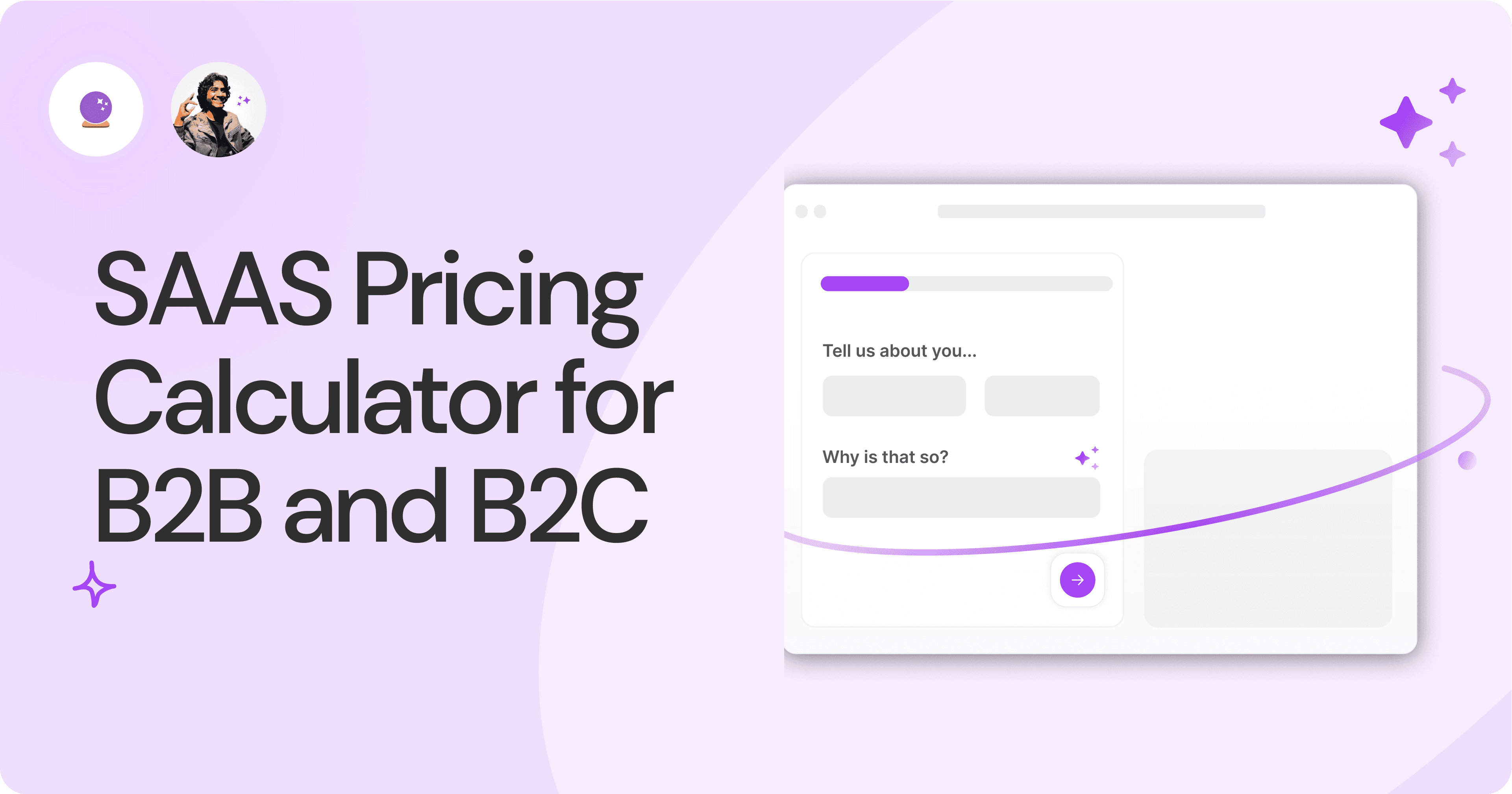
SAAS Pricing Calculators: B2B v B2C Online Forms.
The SaaS pricing calculator is an essential tool for both B2B and B2C SaaS companies. But how do you build it, right? We have you covered.
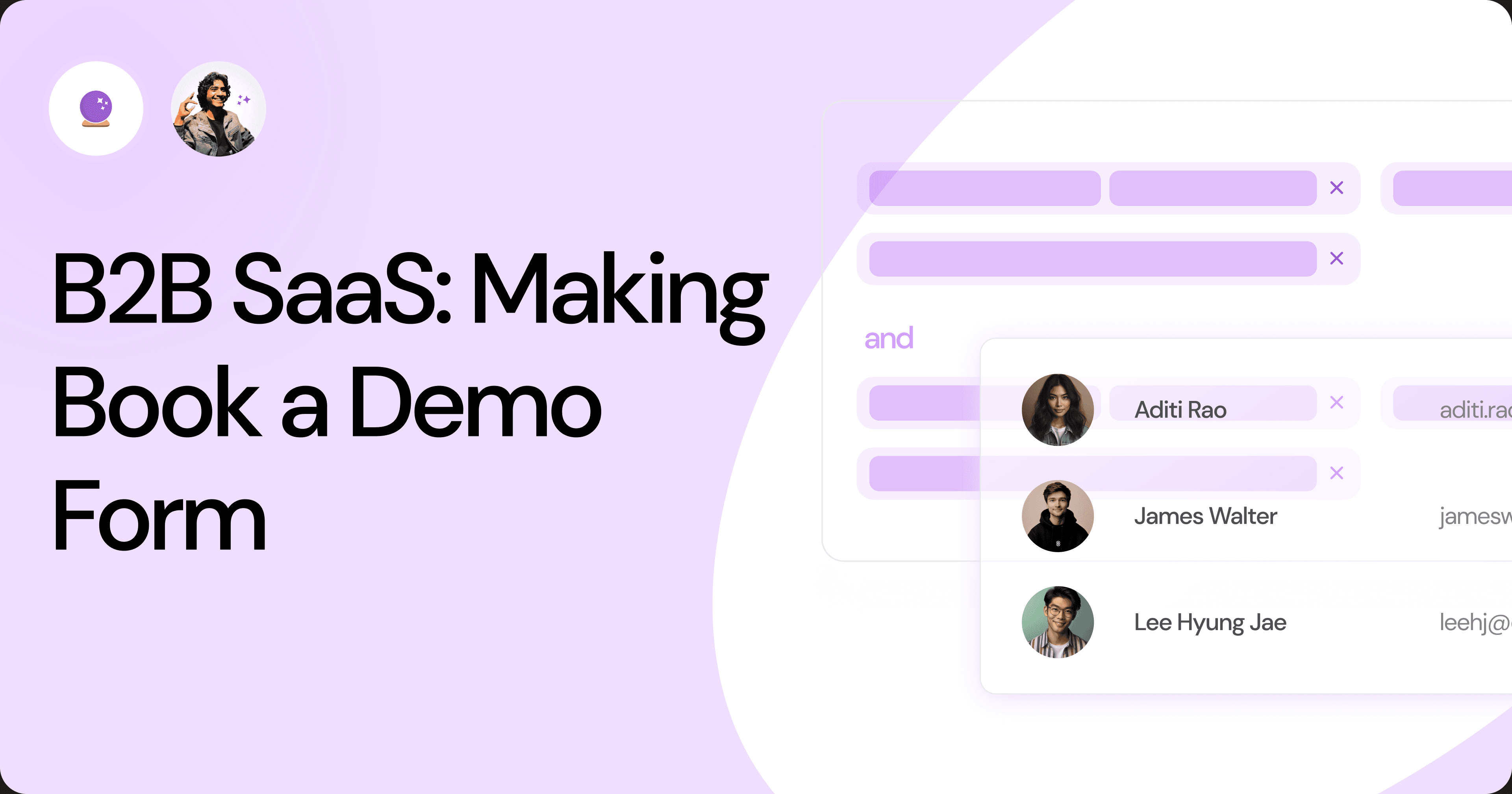
B2B SaaS: Making Book a Demo Form.
Having the perfect book a demo form for B2B SaaS is the first step in capturing leads. There are a few fundamental techniques to get this form right. Read on.

How to Get Started With SaaS Onboarding.
SaaS onboarding is essential for customer onboarding in B2B and B2C SaaS. Let’s understand its fundamentals, including the metrics.
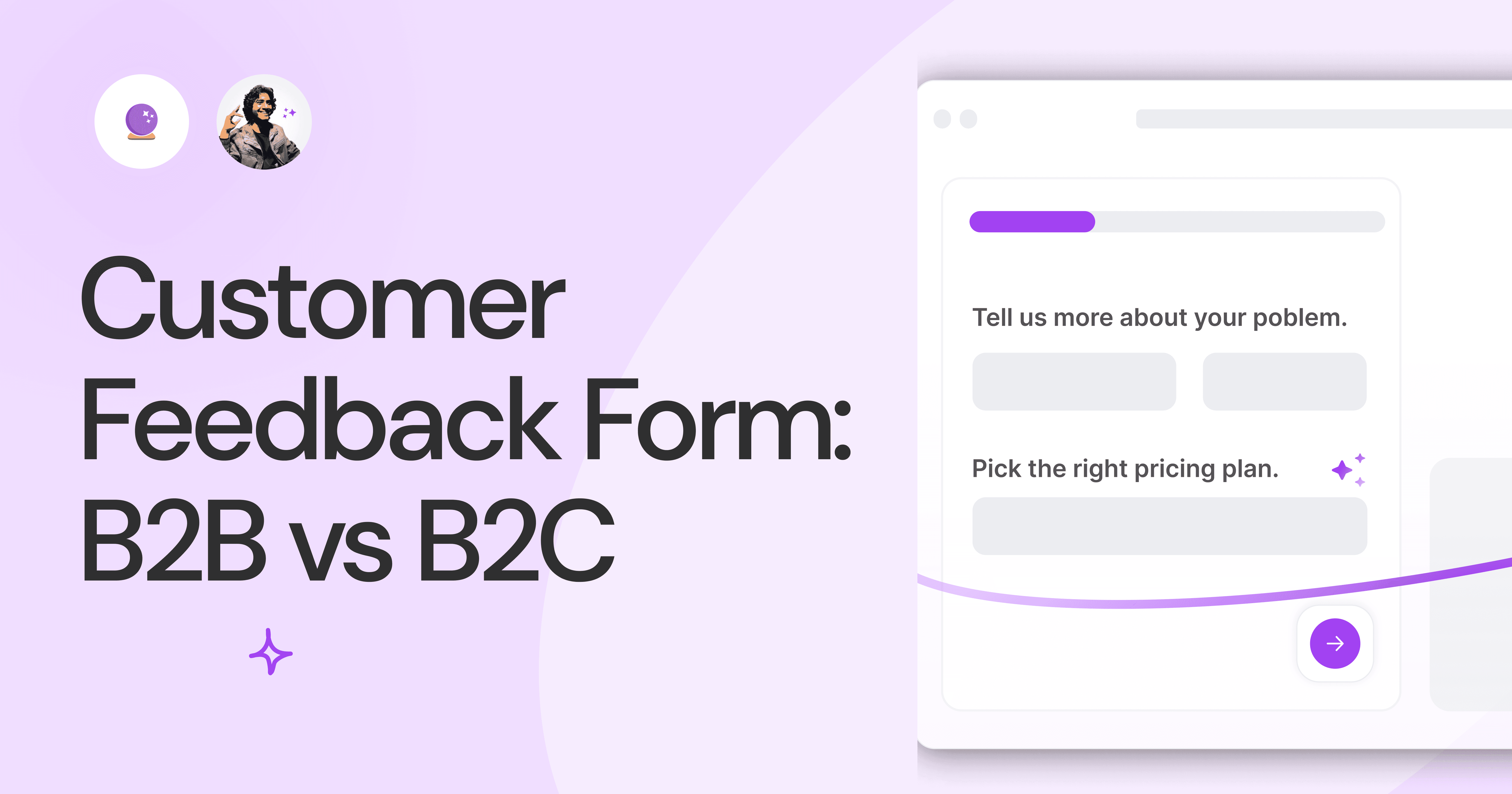
Customer Feedback Form: B2B vs B2C.
Why is customer feedback important? Because it dictates progress on B2B and B2B products and services for the customer to meet their goals.
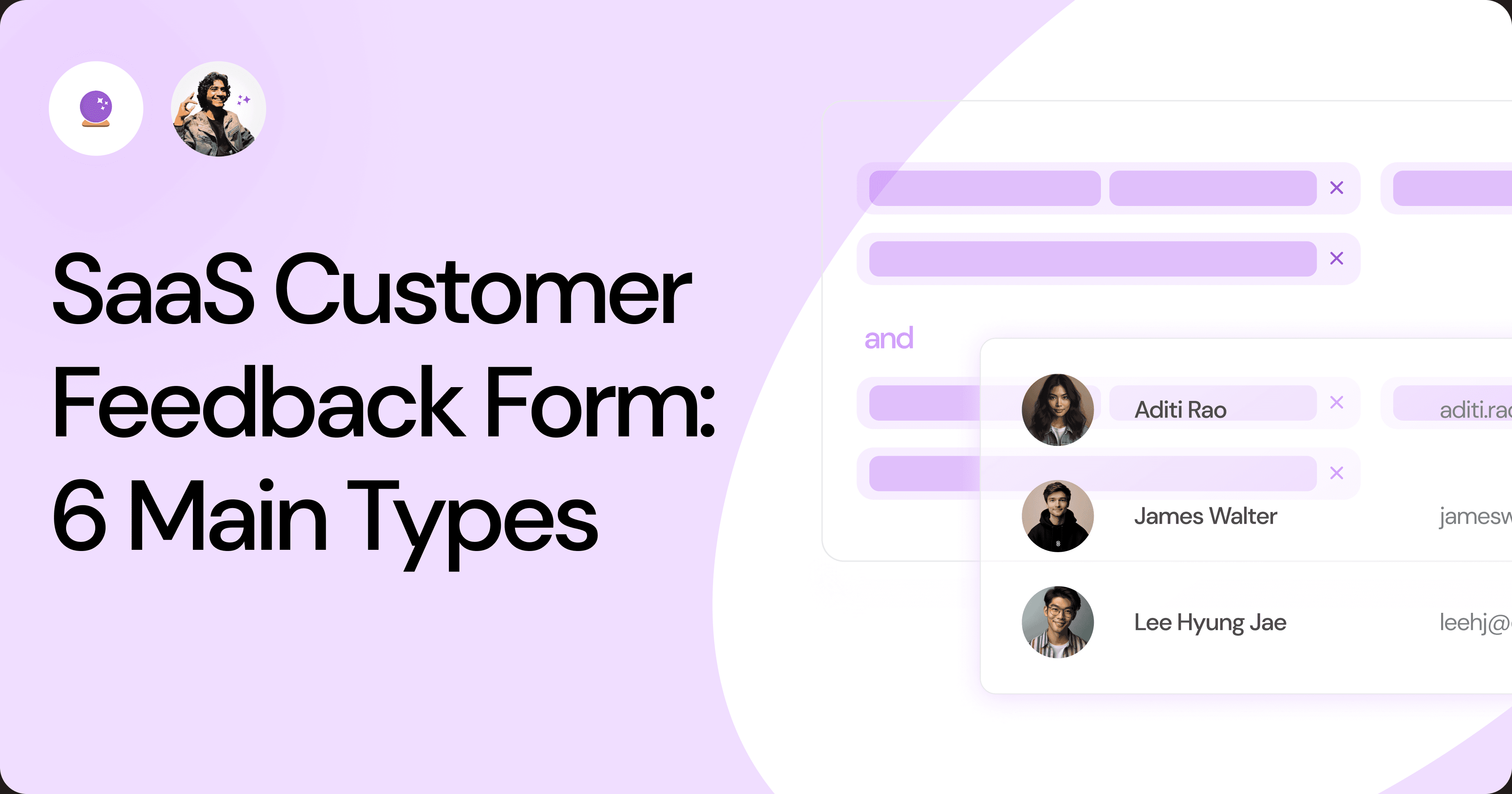
SaaS Customer Feedback Form: 6 Main Types.
As much as SaaS is self-serve, the role of a customer feedback form is highly relevant. There are different types, each with its use case and sections.
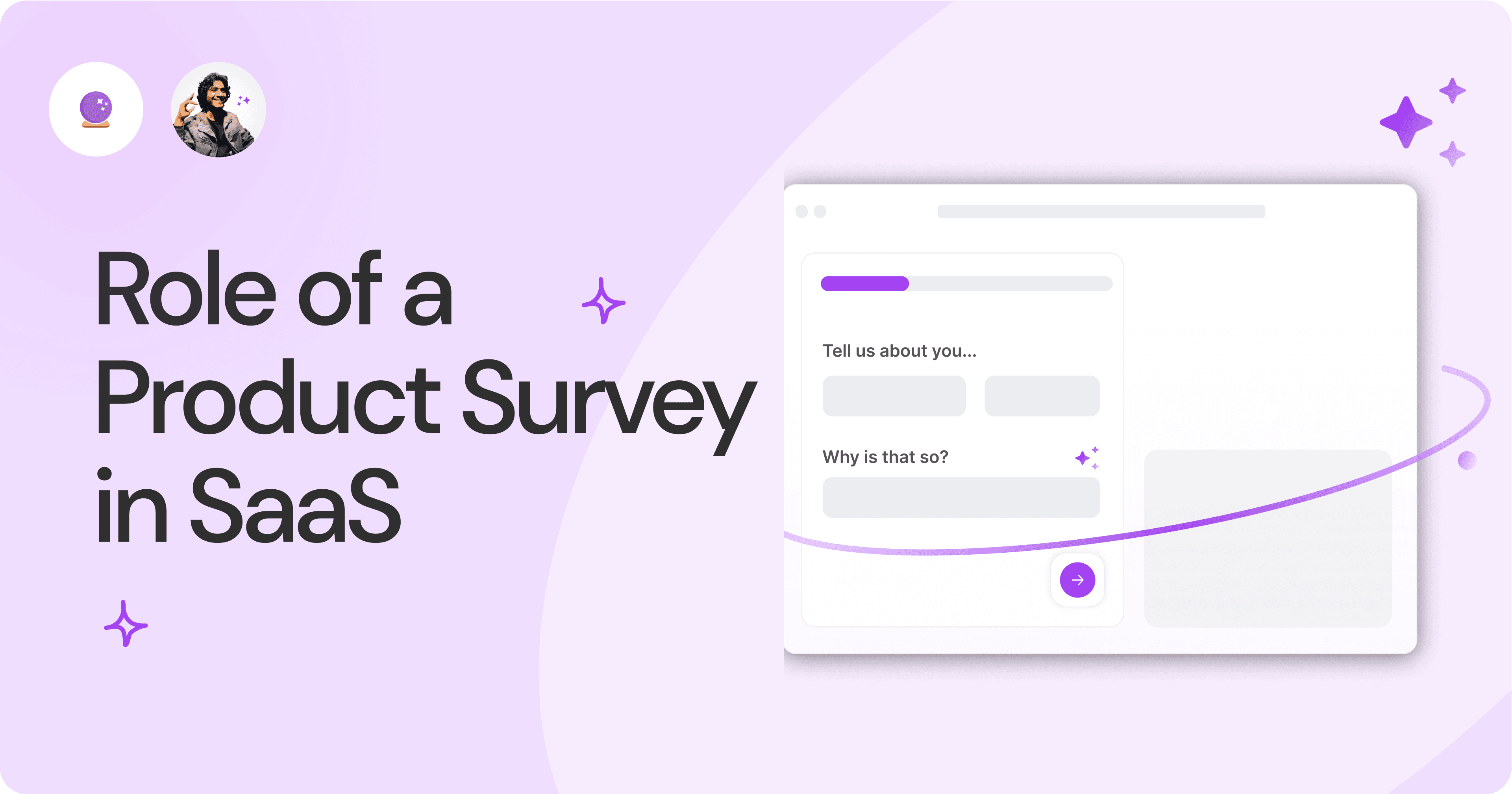
Role of a Product Survey in SaaS.
SaaS is all about creating products for specific use cases. This is where a product survey becomes all the more important to know the user deeply.

Should You Do a SaaS Market Survey?
Every SaaS company wants to grow fast. But without a market survey, growth isn't possible or sustainable. Let’s see how to do a market survey.

SAAS Pricing Calculators: B2B v B2C Online Forms.
The SaaS pricing calculator is an essential tool for both B2B and B2C SaaS companies. But how do you build it, right? We have you covered.

B2B SaaS: Making Book a Demo Form.
Having the perfect book a demo form for B2B SaaS is the first step in capturing leads. There are a few fundamental techniques to get this form right. Read on.

How to Get Started With SaaS Onboarding.
SaaS onboarding is essential for customer onboarding in B2B and B2C SaaS. Let’s understand its fundamentals, including the metrics.

Customer Feedback Form: B2B vs B2C.
Why is customer feedback important? Because it dictates progress on B2B and B2B products and services for the customer to meet their goals.

SaaS Customer Feedback Form: 6 Main Types.
As much as SaaS is self-serve, the role of a customer feedback form is highly relevant. There are different types, each with its use case and sections.

Role of a Product Survey in SaaS.
SaaS is all about creating products for specific use cases. This is where a product survey becomes all the more important to know the user deeply.

Should You Do a SaaS Market Survey?
Every SaaS company wants to grow fast. But without a market survey, growth isn't possible or sustainable. Let’s see how to do a market survey.

SAAS Pricing Calculators: B2B v B2C Online Forms.
The SaaS pricing calculator is an essential tool for both B2B and B2C SaaS companies. But how do you build it, right? We have you covered.

B2B SaaS: Making Book a Demo Form.
Having the perfect book a demo form for B2B SaaS is the first step in capturing leads. There are a few fundamental techniques to get this form right. Read on.

How to Get Started With SaaS Onboarding.
SaaS onboarding is essential for customer onboarding in B2B and B2C SaaS. Let’s understand its fundamentals, including the metrics.

Customer Feedback Form: B2B vs B2C.
Why is customer feedback important? Because it dictates progress on B2B and B2B products and services for the customer to meet their goals.

SaaS Customer Feedback Form: 6 Main Types.
As much as SaaS is self-serve, the role of a customer feedback form is highly relevant. There are different types, each with its use case and sections.

Role of a Product Survey in SaaS.
SaaS is all about creating products for specific use cases. This is where a product survey becomes all the more important to know the user deeply.

Should You Do a SaaS Market Survey?
Every SaaS company wants to grow fast. But without a market survey, growth isn't possible or sustainable. Let’s see how to do a market survey.

Nine Types of Healthcare and Medical Forms.
Medical forms are a must-have for any healthcare business or practitioner. Learn about the different kinds of medical and healthcare forms.

4 Tips for Better Medical History Forms.
Medical history forms are central to patient care, onboarding, and medical administration records. Learn how to make them easier to fill.

How to Build Mental Health Intake Forms?
Mental health intake forms are not like patient intake forms. Mental health intake forms deal with far more sensitive data and have specific design methods.

What, Why and How of Telemedicine Forms.
Telemedicine is on the rise and with different form builders out there, which one best suits your needs as a healthcare services provider?

3 Reasons for Major Drop-Offs in Medical Forms.
No matter which healthcare form we pick, there are major drop-off reasons. We shall dive into the top 3 and learn how to resolve them in your next form.

Patient Onboarding Forms - From Click to Clinic.
Patient onboarding forms are the first touchpoint for patients; getting this right for higher conversion rates is a must-have. Learn how to perfect them now.

5 Key Parts of a Good Patient Satisfaction Form.
The goal of patient satisfaction surveys is to course-correct the services of a healthcare provider. Patient feedback leads to a culture of patient-centric care.

Build Quick and Easy Medical Release Forms.
Every HIPAA-compliant healthcare provider comes across medical release forms that involve details from medical history forms. Can they be shipped fast? Yes.

SAAS Pricing Calculators: B2B v B2C Online Forms.
The SaaS pricing calculator is an essential tool for both B2B and B2C SaaS companies. But how do you build it, right? We have you covered.

B2B SaaS: Making Book a Demo Form.
Having the perfect book a demo form for B2B SaaS is the first step in capturing leads. There are a few fundamental techniques to get this form right. Read on.

How to Get Started With SaaS Onboarding.
SaaS onboarding is essential for customer onboarding in B2B and B2C SaaS. Let’s understand its fundamentals, including the metrics.

Customer Feedback Form: B2B vs B2C.
Why is customer feedback important? Because it dictates progress on B2B and B2B products and services for the customer to meet their goals.

SaaS Customer Feedback Form: 6 Main Types.
As much as SaaS is self-serve, the role of a customer feedback form is highly relevant. There are different types, each with its use case and sections.

Role of a Product Survey in SaaS.
SaaS is all about creating products for specific use cases. This is where a product survey becomes all the more important to know the user deeply.

Should You Do a SaaS Market Survey?
Every SaaS company wants to grow fast. But without a market survey, growth isn't possible or sustainable. Let’s see how to do a market survey.
Subscribe to stay updated.
Subscribe to stay updated.
Subscribe to stay updated.
HC

HC

HC

HC

70+ people from across industries read our emails.
HC

HC

70+ people from across industries read our emails.
HC

HC

HC

70+ people from across industries read our emails.




Bangalore, India / San Francisco, US
WorkHack Inc. 2023
Bangalore, India
San Francisco, US
WorkHack Inc. 2023
WorkHack Inc. 2023
Bangalore, India / San Francisco, US
WorkHack Inc. 2023
Bangalore, India / San Francisco, US



